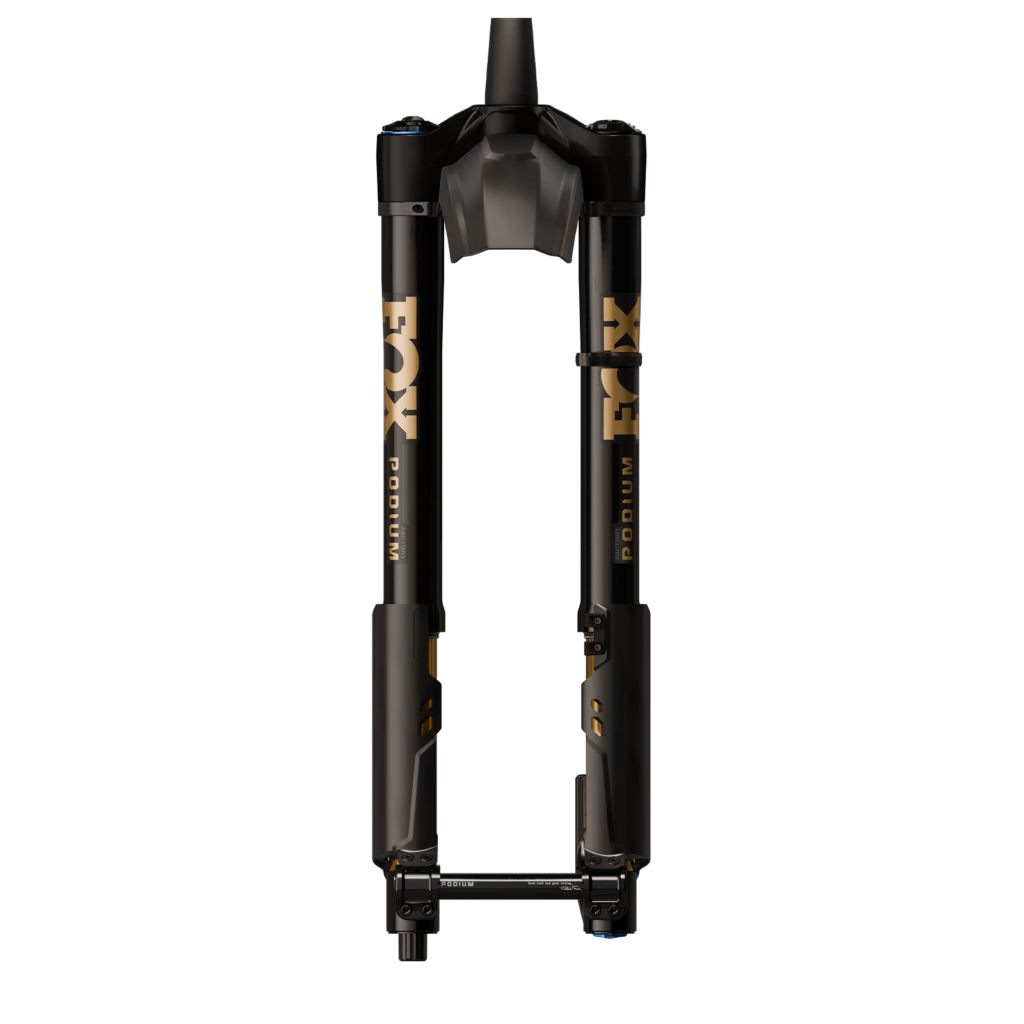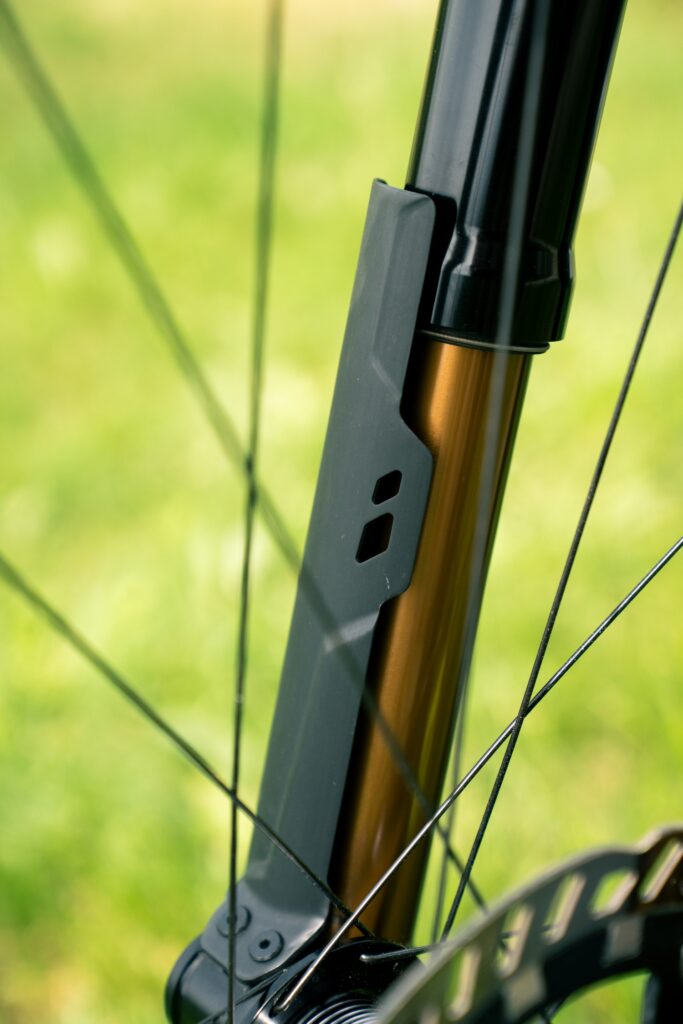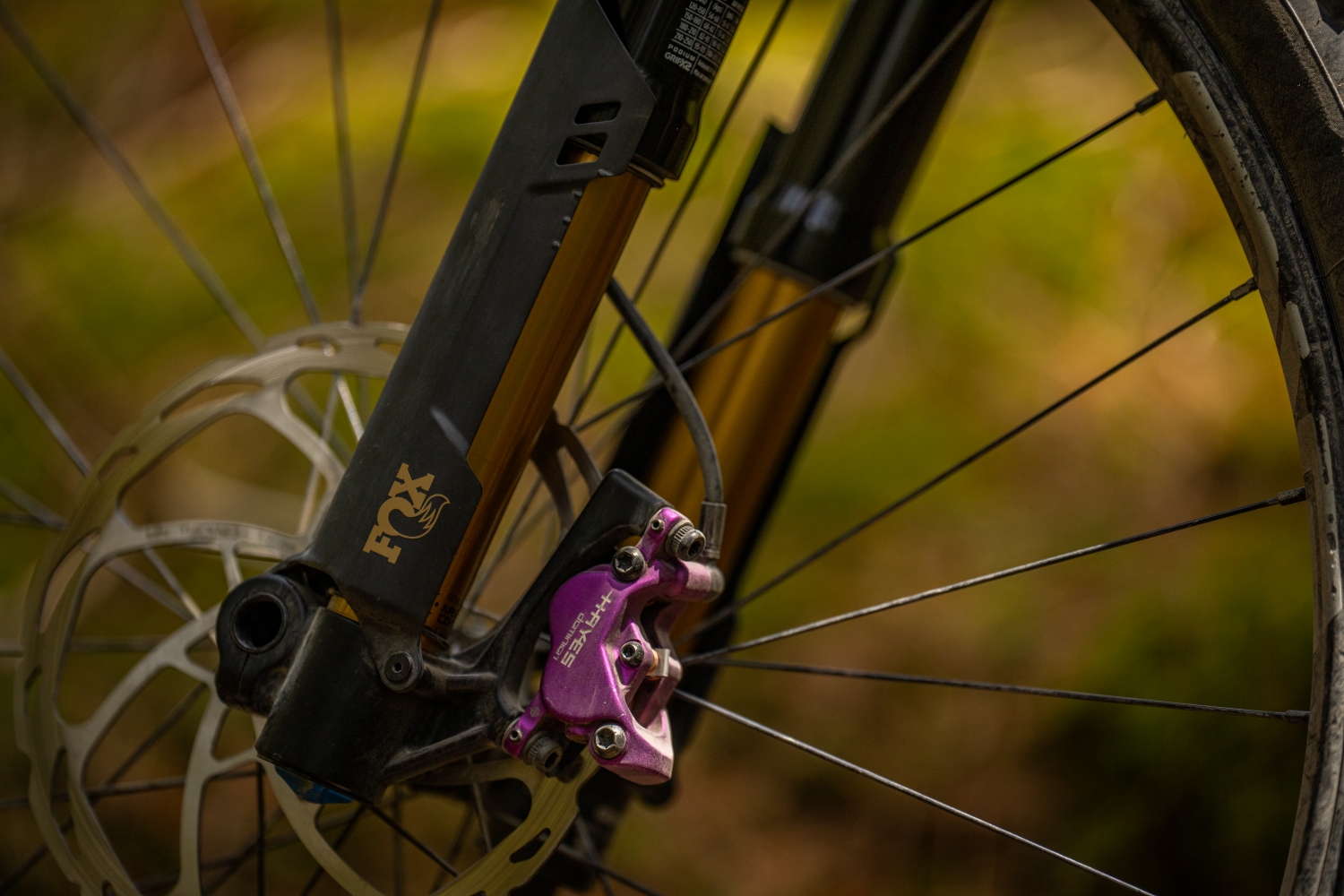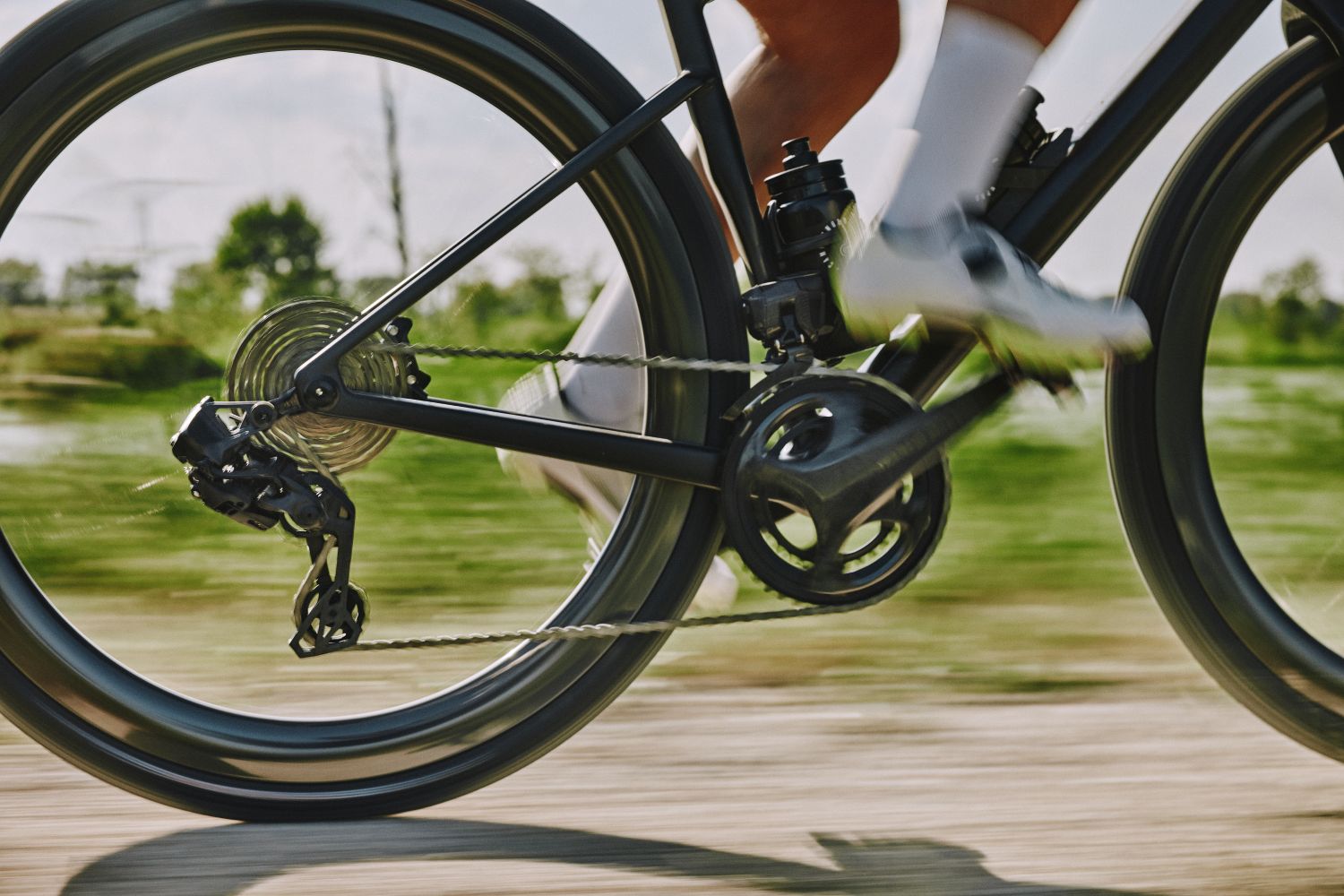2026 Fox Podium Fork Launches with Inverted Design and GRIP X2 Damper
The Fox Podium Fork reimagines enduro suspension with DH-level stiffness, smooth travel, and a bold upside-down chassis
Key Details of 2026 Fox Podium Fork
- Product Name: Fox Podium Fork
- Category: Enduro / Trail
- Design: Inverted single-crown suspension fork
- Travel Options: 160mm / 170mm
- Wheel Size: 29”
- Damper: GRIP X2 (with HSC, LSC, HSR, LSR adjustability)
- Spring: FLOAT EVOL GlideCore
- Axle: 20 x 110mm Boost (floating axle)
- Crown Diameters: 58mm and 68mm options
- Stanchion Finish: Kashima-coated
- Brake Mount: 200mm Post Mount (230mm max)
- Rake: 44mm
- Weight: 2695g (claimed)
- Extras: Integrated bleeders, FOX mudguard (available Fall 2025)
- RRP (AUD): $3349
- More Info: au.ridefox.com
Today, Fox announced the launch of their new Podium fork – a 150-170mm, 29” enduro-specific offering featuring the GRIP X2 damper. Sounds pretty standard, right? Well, here’s where things get interesting: the Podium is Fox’s first foray into the world of inverted forks. What does that mean? It’s upside down!


Inverted forks aren’t new. Back in the mid-90s, we saw the Halson Inversion fork, followed by the Marzocchi RAC in 1999 and the Shiver around 2000. Since then, Manitou, DVO, and of course RockShox have thrown their hats into the inverted fork ring – with the RockShox RS-1 seeing the most commercial success.
Shout out also to the Cannondale Lefty fork (or “tine”, perhaps?) – doing it all upside down, with one hand tied behind its back, for years.
Just like low-rise jeans are back in 2025, Fox has revived inverted fork technology. But why?
Topsy-Turvy Performance Advantage
Fans of inverted forks argue that they offer several benefits over traditional telescopic designs – primarily by reducing unsprung weight, allowing the suspension to control a greater mass of the bike for improved handling. This reduction is also said to enhance suspension performance. Additionally, inverted forks can provide greater torsional stiffness, resulting in more precise steering and less flex under heavy loads.
With the stanchions positioned lower in an inverted design, the seals remain lubricated while at rest, and the air spring compresses while bathing the stanchion – a potential plus for longevity and consistency (though as you’ll see below, there’s another side to that story).

Fox says the Podium delivers “exceptional fore-aft rigidity, ultra-smooth travel, and DH-style confidence”, allowing it to ride like a downhill fork – without the need for a triple crown. The inverted layout shortens the distance from the lower bushing to the axle as the fork compresses, reducing leverage on the bushing and, in turn, lowering friction when diving deep into the travel on big hits or in technical terrain.
The Podium is built to get the absolute most out of the GRIP X2 damper, with every possible gain focused on travel smoothness and confidence-inspiring chassis rigidity. It uses Fox’s new GlideCore air spring, designed for next-level plushness and built-in lateral and axial compliance. The spring is engineered to flex with the fork under high loads, reducing binding and stiction. The result? Fox claims better small bump sensitivity and improved control when terrain gets wild.
The Caveats
As good as all that sounds, there are reasons the bike industry hasn’t completely flipped over to inverted fork designs – namely weight, stiffness, and wear.
To achieve fore-aft rigidity levels comparable to a dual-crown fork, inverted designs require much beefier uppers. Fox addresses this by using 47mm upper tubes and an oversized crown. Still, some may argue the structural weakness simply shifts further down the fork, and that Fox’s use of a 20 x 110mm Boost axle is more of a reinforcement than a solution.
All that stiffness comes at a cost: weight. The Podium tips the scales at a (claimed) 2695g, about 500g more than a Fox 38 Performance Elite with the GRIP X2 damper – a notable jump for the same amount of travel. Comparing the Podium to the Fox 40 (Fox’s triple-crown downhill offering), the Podium shaves just 50g off the big hitting downhill fork, and while it’s a case of apples and oranges it;s something to point out that a 160/170mm fork essentially compares far more closely in weight to a downhill fork than most enduro forks on the market. So, the question is: is the weight worth the performance gain? And on the comparison to the Fox 40 that dominates the 190/203mm travel category, is there scope for the podium fork to reach 180mm where there surely is the demand on bigger enduro bikes. Time may tell.

And finally, there’s the longevity debate. With the stanchions sitting closer to the ground, mud, grit, and dust become a bigger concern. Fox includes integrated mudguards with the Podium to help fend off trail debris – but only time will tell how effective they are in keeping the internals clean.
So, is the Fox Podium the next big thing in inverted fork design? Could it be the fork that finally reimagines mountain bike suspension? Or is it change for the sake of change?
One thing’s for sure: Fox has taken a bold step, launching the Podium into a market where inverted forks have long been the underdog.







